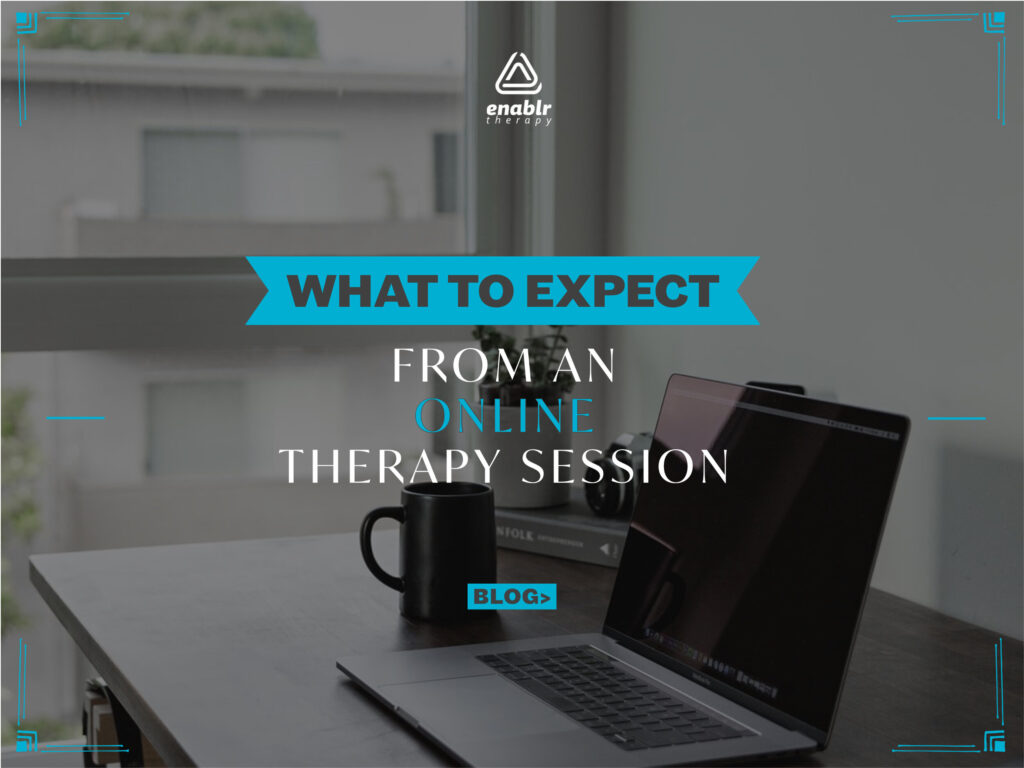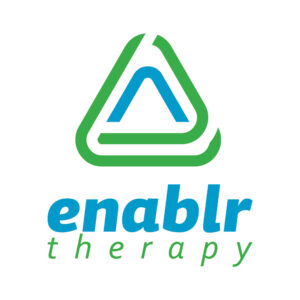
We know teletherapy is somewhat new to a lot of people, so let us clear up the unknowns! Teletherapy is when therapy services are provided using technology such as a computer, tablet, or smartphone. Teletherapy sessions are very similar to in-person sessions, but interactions with the therapist are done through secure, online, real-time video conferencing platforms.
Telehealth Meets the Needs of a Wide Range of PT, OT, and ST Clients
Research has shown that teletherapy can be used to treat a wide range of illnesses, injuries, disabilities and developmental delays from autism, sports injuries, to strokes, and more. Therapists will tailor the therapy sessions to meet the needs of the client. Working within the actual home, work, or community environments helps to promote independence as clients can improve their skills right where they use them. In addition, parents and caregivers receive vital training for therapy carryover which can foster faster progress.
Preparing for Online ST, OT, and PT Sessions
Enablr therapy will connect with you prior to your first session to gather important information about your needs and goals prior to your first session. In addition, below is a set up checklist that you can complete before starting your therapy services.
Technology Set Up:
-
Make sure your browser is updated and supports the therapy platform
-
Verify your device microphone and camera are working properly
-
Ensure your device is hands-free
-
Establish a good internet connection
-
Download the Zoom video conferencing application
Therapy Space and Materials:
-
Gather any materials that your therapist suggested for the session. If you don’t have the requested materials on hand, just notify your therapist.
-
Make sure this area is well lit so the therapist can clearly see you.
-
If you are expecting to exercise during your therapy session, clear a space in your home so that you can freely move. Wear something loose-fitting that allows you to comfortably do the exercises as needed.
-
Write down any questions or concerns that you have for your therapist so they can be addressed.
-
If receiving speech language therapy, please refrain from eating, drinking, or chewing gum if possible so your speech pathologist can hear you clearly. Consider using a headset with a microphone to pick up speech sounds better.
At the time of your appointment, use the links in your email reminders to start the video session. All sessions are held on Zoom, a HIPAA compliant video conferencing platform, to protect your privacy.
What to Expect During Your Online Therapy Session
Like an in-person session, you can expect your therapist to instruct and guide you through activities, exercises, or therapeutic techniques that move you toward your goal. They will also provide valuable feedback to help you master the skills. They might even do the exercises and activities with you! Following the session, a therapist may send some additional activities and exercises, video clips, and other resources for your use.
Parents and caregivers are encouraged to attend as well! By participating, they can help to keep the camera focused on the client throughout the session and learn valuable tips, tricks, activities and exercises to integrate at home. This ensures carryover and generalization of the skills learned into everyday life.
For pediatric clients, the therapist will engage your child in fun, goal-directed activities and games. For very young children who are not able to directly participate in therapy at a computer, the therapist may utilize a parent coaching approach, collaborating with the parents to create actionable strategies that can be implemented within the family’s home.
To view a video demonstration of a teletherapy session for both an adult and child, click here.
Benefits of Virtual Therapy
Research has shown that:
-
Telehealth is appropriate and effective in expanding client access to quality care for many different types of diagnoses.
-
It reduces issues related to accessing care, such as the time and energy needed to travel to appointments and time waiting at busy clinics.
-
It allows clients to be seen by highly qualified therapists and specialists even if they live in rural areas.
-
It is beneficial to have the therapist teach you how to move better in YOUR own home. This encourages a routine in a familiar environment and generalization of skills.
-
Virtual therapy also provides a more cohesive experience by allowing parents or caregivers to be included in the process.
Does Telehealth Work?
Research on the benefits and positive outcomes for virtual therapy have been very promising! By practicing in the home, clients are more likely to stick with their programs. It provides a convenient way to safely and effectively participate in a therapy program based on specific needs and goals. Lastly, it allows for better integration of the services into a client’s actual routines and environment.
All Enablr teletherapy providers go through internal training specifically for the virtual services described above. If you would like to learn more, visit our therapy services page. Enablr Therapy provides in-person and live-video speech, occupational, and physical therapy sessions throughout Tennessee, Texas, Georgia, and Michigan; we will be expanding into other states in the future.



